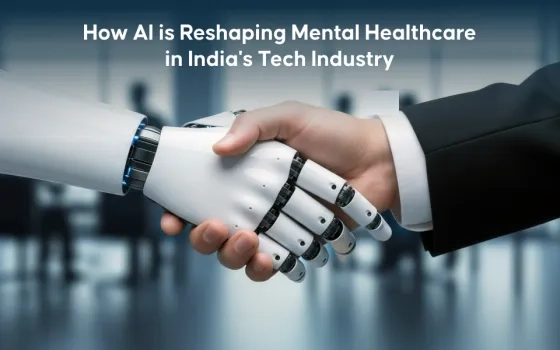Medical device and high-tech equipment manufacturers face several challenges that evolve with the times and trends. The COVID-19 pandemic was a disruption that pushed for quicker deployment of digital technology in the medtech industry.
Today, digitization is revolutionizing the healthcare industry from remote care to research and development (R&D) drug creation and discovery projects, monitoring and assessing, and producing advanced medical equipment.
McKinsey predicts by 2030, various interventions such as remote monitoring, artificial intelligence (AI), and automation can save anywhere between $1.5 trillion and $3 trillion annually for the industry.
According to a KPMG report, the global annual sales of medical devices can increase by more than 5% a year and reach around $800 billion by 2030. Despite these numbers, medical device manufacturers face many challenges in day-to-day operations – ranging from security, regulation, and quality to the supply chain.
The following are some factors causing medtech manufacturers significant pain.
Security woes
Security-related concerns are the most common barrier to the digital revolution of medical devices. Every piece of technology provides a point of entry for hackers, raising questions about the potential for a cyberattack to target a specific patient at the most granular level. Patients also seek assurances regarding security of the data their device collects, stores, and uses. Every medical device must have encryption, two-factor authentication, and other security features as standard.
Counterfeit products entering the supply chain are another major issue as patient health is at risk by fake products, ultimately depleting the profits of legitimate manufacturers.
Regulatory hurdles
Navigating the regulatory landscape remains a significant problem. Regulation interpretation, application determination, and compliance take a considerable amount of time and money.
On the other hand, the U.S. Food and Drug Administration's (FDA) medical device reporting regulations add more stringent control. Contrarily, the Health Insurance Portability and Accountability Act (HIPAA) has set out additional strict privacy regulations for any device collecting or transmitting information about the patient or their health.
Supply chain concerns
Supply chain disruption from natural disasters, political instability, and economic downturns are just a few examples causing delivery delays leading to interruptions in patient care. Cost overruns are another result of supply chain disruptions due to the high cost of raw materials and related production expenses.
When semiconductor components such as processors and memory are in limited supply, the supply chain can get delayed, costs can soar, and eventually, there’ll be a lack of available medical products. These factors lead to lower sales and expenses for medical device manufacturers.
Quality issues
Operating in a high-risk field, medical devices and equipment must be reliable and efficient for end users, and the cost of poor quality (COPQ) might be high. Quality concerns get reported in design, software, and non-conforming materials and components across the industry. A medical device manufactured but subsequently recalled can cause severe issues for a manufacturer and ultimately hit the company's sales target.
The medical device business loses billions of dollars annually due to defective products and recalls; litigation can hurt a company's reputation. In 2022, Dutch medical tech maker Philips had to cut 6,000 jobs after a massive recall of faulty sleep respirators and face a $1.7 billion loss.
Embracing Industry 4.0
Even if obstacles appear overwhelming, medtech companies are focusing on Industry 4.0 and new digital transformation frameworks and technology to combat challenges and improve bottom lines.
The manufacturing process must be completely error-free while offering high output, whether a business is creating diagnostic equipment, disposable devices, or implantable devices.
Additionally, as Industry 4.0 and the Internet of Things (IoT) gain momentum, medical equipment and device manufacturers are discovering adopting automation in their processes has advantages beyond increasing output and quality.
Cutting-edge technologies, such as digitization, artificial intelligence (AI), user response data (ergonomics), human psychology, IoT, machine learning (ML), Big Data mining, and augmented reality (AR), are part of Industry 4.0 in medtech. Industry 4.0 is causing a paradigm shift in healthcare and medical device industries by improving user comfort through proactive involvement in early identification and treatment of different ailments.
Robotics-assisted automation
To adhere to stringent quality criteria of the industry, medical device and equipment makers require increasing automation – not just for specific operations but for the entire manufacturing unit. The production and whole value chain requires automation, including product testing, inspection, packing, storage, and retrieval.
For instance, a robotics-assisted test automation solution that supported 90% of digital IoT integration projects for an innovative medical device company, helped them become FDA-compliant. The medical device company built a proprietary insulin management system, offering a unique alternative to traditional insulin delivery methods for people with insulin-dependent diabetes.
AI for medtech
A GlobalData report predicts the AI industry will generate $93 billion in sales in 2023, a 12% increase from 2022, and AI has valuable applications in the production of medical devices, including data management, remote surgery, assistance for diagnostic and therapeutic procedures, clinical trials, and more. AI can increase the reliability of medical device manufacturing and lower risk via ML as computers can ingest enormous amounts of data and detect errors as they go.
In addition, in 2022 the FDA granted faster approvals for medical devices using AI, a trend that’ll continue and benefit medical devices and healthcare.
Agility with SaMD
One game-changing advancement in digital health technology is software that can perform sophisticated medical functions – Software as a Medical Device (SaMD).
SaMD has the potential to impact the healthcare business as it can help save time and reduce healthcare imbalances by speeding up diagnosis, simplifying management, personalizing therapy, increasing access, and automating care.
The FDA approved the first of many AI-based SaMD in 2020, showing regulatory authorities are adopting AI and ML-based medical devices for clinical usage without jeopardizing patient safety standards.
Data-driven decision making
The digital revolution of the medical device industry depends heavily on the Internet of Medical Things (IoMT). With cutting-edge inventions, IoMT has revolutionized the medtech industry. This technology has significantly impacted medical device companies by lowering costs, increasing efficiency, and improving patient outcomes.
Manufacturers can enhance data collection and its use to assist healthcare practitioners in making informed decisions by integrating IoMT with essential medical equipment. The IoMT-connected environment gave them access to real-world data they can now use to improve products.
A distributor or manufacturer may quickly detect crucial operational ratios and indications for a device in a specific area, such as slow-moving stock, inventory turnover, and gross margin, by leveraging business intelligence (BI). A BI system can assist businesses in seeing and reacting to potential indicators of a sluggish sales cycle or market slump.
Positive outlook
Frost & Sullivan predicts the medtech industry is poised to generate $241 billion in revenue riding on digital transformation projects between 2018 and 2024. Medtech companies that can transform to become digitally mature will likely disrupt the ecosystem and gain a competitive edge.
On the contrary, businesses lagging in the use of cutting-edge technology risk slipping behind competitors. The same applies to companies just testing the waters rather than genuine digital transformation and reinvention.
The moment has come for medtech organizations to embrace digital transformation and adopt a purpose-driven mindset to fully benefit from its exponential value, flexibility, and resilience.
About the author: Sairam Vedam is CMO at Cigniti Technologies

















